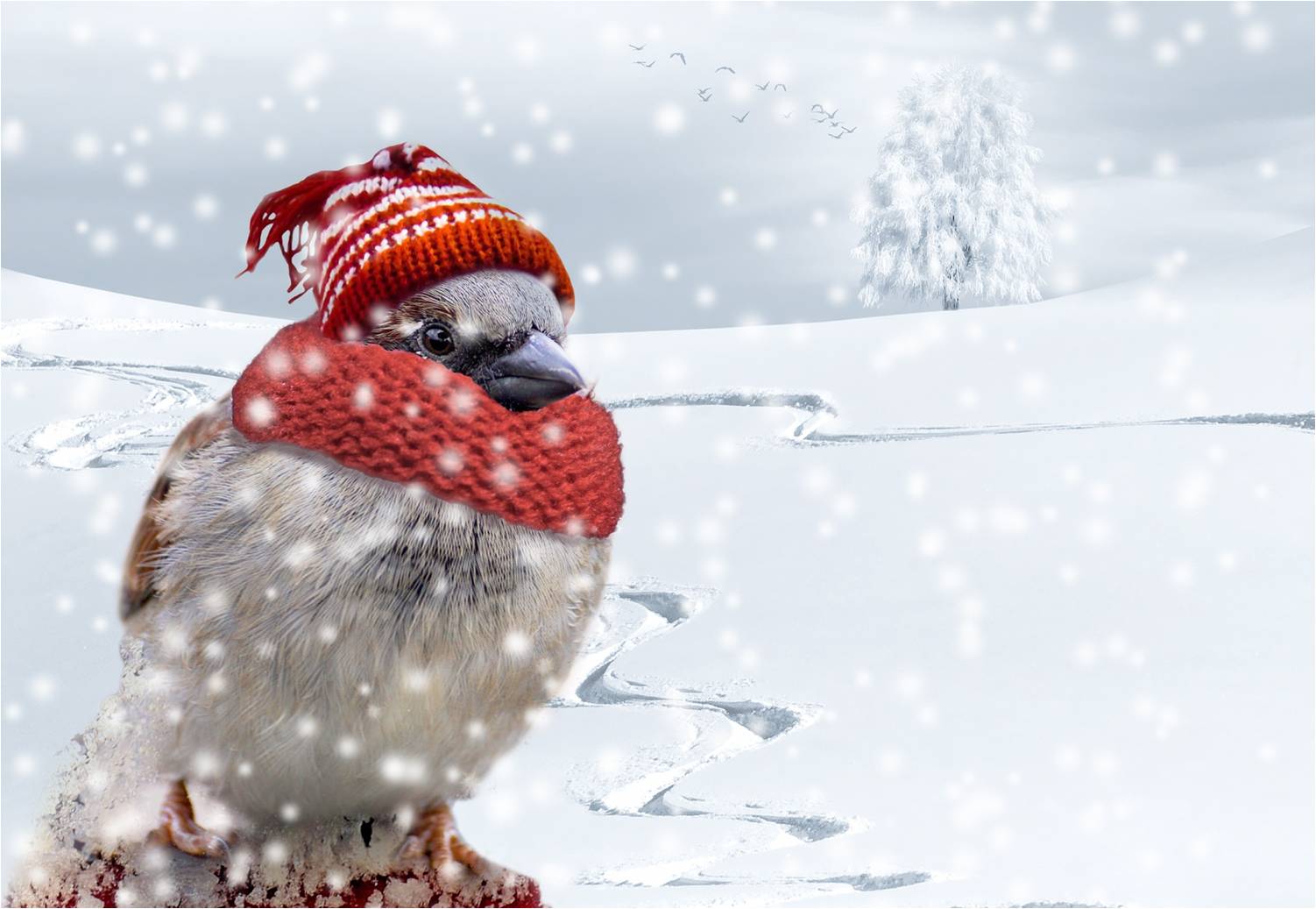The enchanting, frost-kissed landscape of Atlantic Canada during winter is a sight to behold. As beautiful as it is, it poses quite a challenge for the vibrant community of wildlife that spends the winter in the area. Adaptation and mutual support are the key secrets to thriving in these frosty months, but here’s how we can lend a warm hand to our nature buddies during the chilly season.
Take it Easy this Fall
Why do we spend hours outside every fall, cutting plants and raking leaves? It’s exhausting. It’s cold. Our joints ache for days. Treat yourself and the wildlife to an ecological fall cleanup this year. They are easy to do – tuck your tools away, go into the house and wait until spring. By leaving all the plant debris in place, you are providing shelter for hundreds of insects and spiders in different stages of their development. Frogs, like spring peepers, spend the winter buried in the leaves. Their bodies freeze solid, except for their vital organs and when they finally thaw out, their songs announce the arrival of spring.
Make Habitats Hospitable
Over the last several years, we have seen less snow cover that lasts the entire winter. Providing natural shelter from the cold is a simple way to help plants and animals. Gather fallen sticks and branches and pile them in a corner of your yard to shelter birds, mice and squirrels. Piles of rock in sunny areas will harbour overwintering insects. You might even find a few lady beetles or a morning cloak butterfly soaking up the sun’s rays on a warm day in March.
The hollow stems of plants left in place will harbour the following generation of solitary bees and provide stakes for next season’s blooms. Leave your birdhouses in place for the winter. Those cozy shelters offer safe havens for birds, squirrels, and other critters seeking refuge from the bitter cold. Just be sure to clean them out in the fall. Don’t put your tree on the curb after Christmas. Place in a sheltered spot in your yard to provide more places for animals to stay warm.
Natural Dining Options
In addition to shelter, overwintering plants provide food throughout the winter. Coneflowers, sedums and switch grass are a well-needed source of seeds for chickadees, finches, sparrows and grosbeaks. Snow-laden berries on holly, mountain ash and crab-apple trees will keep the blue jays and robins, squirrels and rabbits fat and happy. Native plants are always an excellent addition to a garden. Consider adding blueberries, dogwoods and evergreen shrubs, which will have the most significant impact.
Satisfying Critter Cravings
During the winter, food can be scarce, so ensuring a constant supply aids the survival of numerous bird species. Provide feeders with nutrient-rich foods, including fruit, suet, nuts and berries. Black-oiled sunflower seeds will draw a large variety of birds, or you can opt for a specialized songbird mix for feeders hung high. Platform feeders will attract ground-feeding birds like mourning doves and juncos. Put out enough food to last for one day. This will prevent rodents from visiting at night. Keep the feeders kept clean. Wash them often to avoid mould and diseases. Provide clean, heated water sources to ensure our critter friends have access to water for drinking and bathing when natural sources are frozen.
Winter Wildlife Pledge
Act responsibly in areas where wildlife resides. Avoid using de-icing salts and harmful chemicals. This will preserve the soil and prevent harm to plants and wildlife. Be respectful of areas where you have seen wildlife activity. By keeping disturbances and loud noises at bay in their habitats, we aid them in preserving their precious energy. Spread awareness about the significance of preserving natural habitats and respecting wildlife during the winter to ensure we are unified in caring for our environment. Let’s unite and create a winter haven that nurtures all its inhabitants and ensures our actions positively impact the diverse life gracing this wondrous region.

